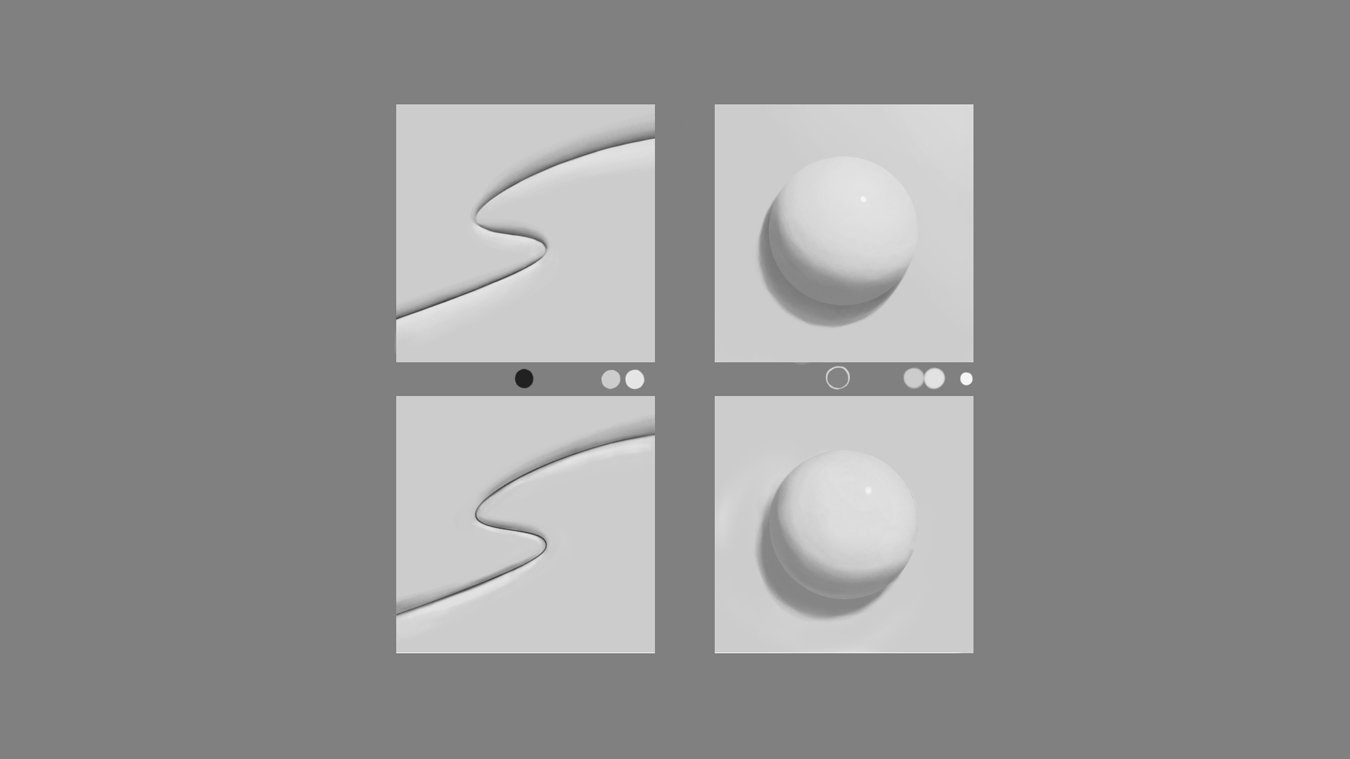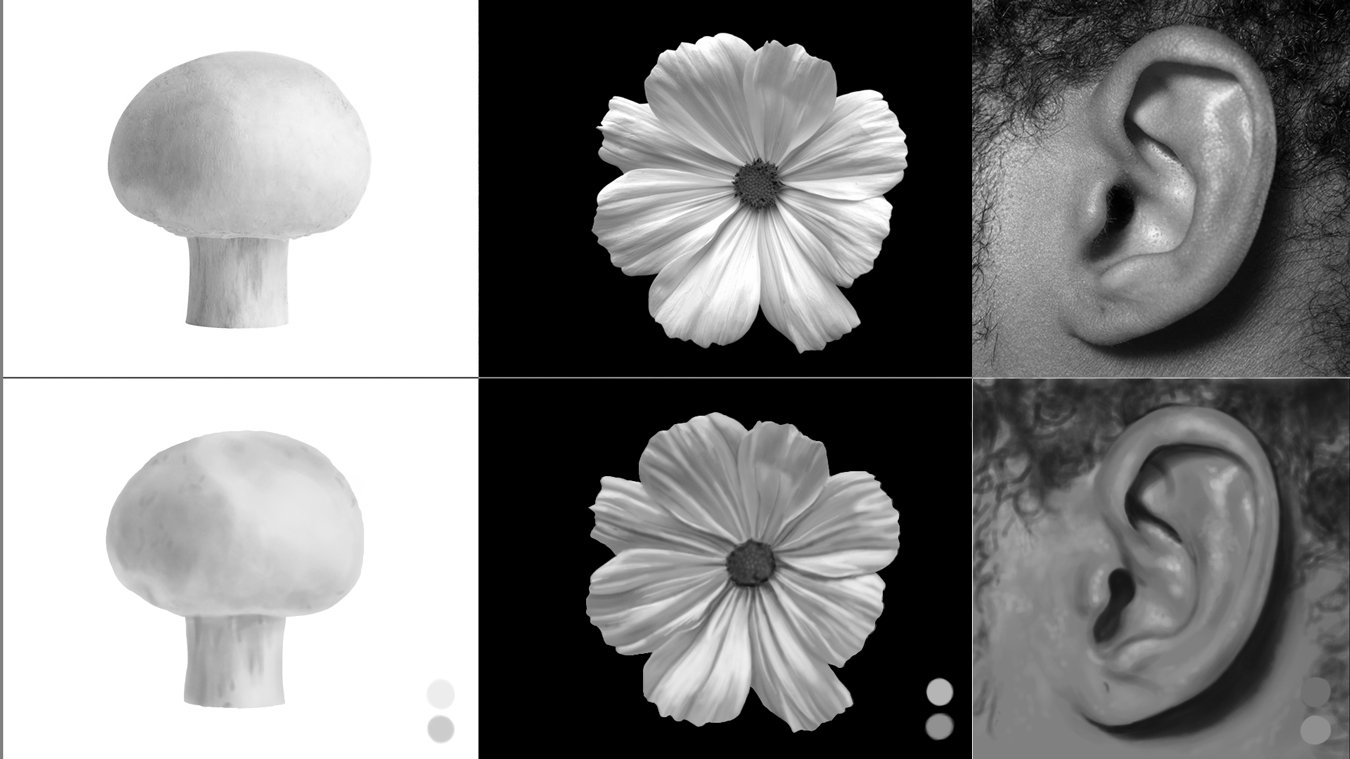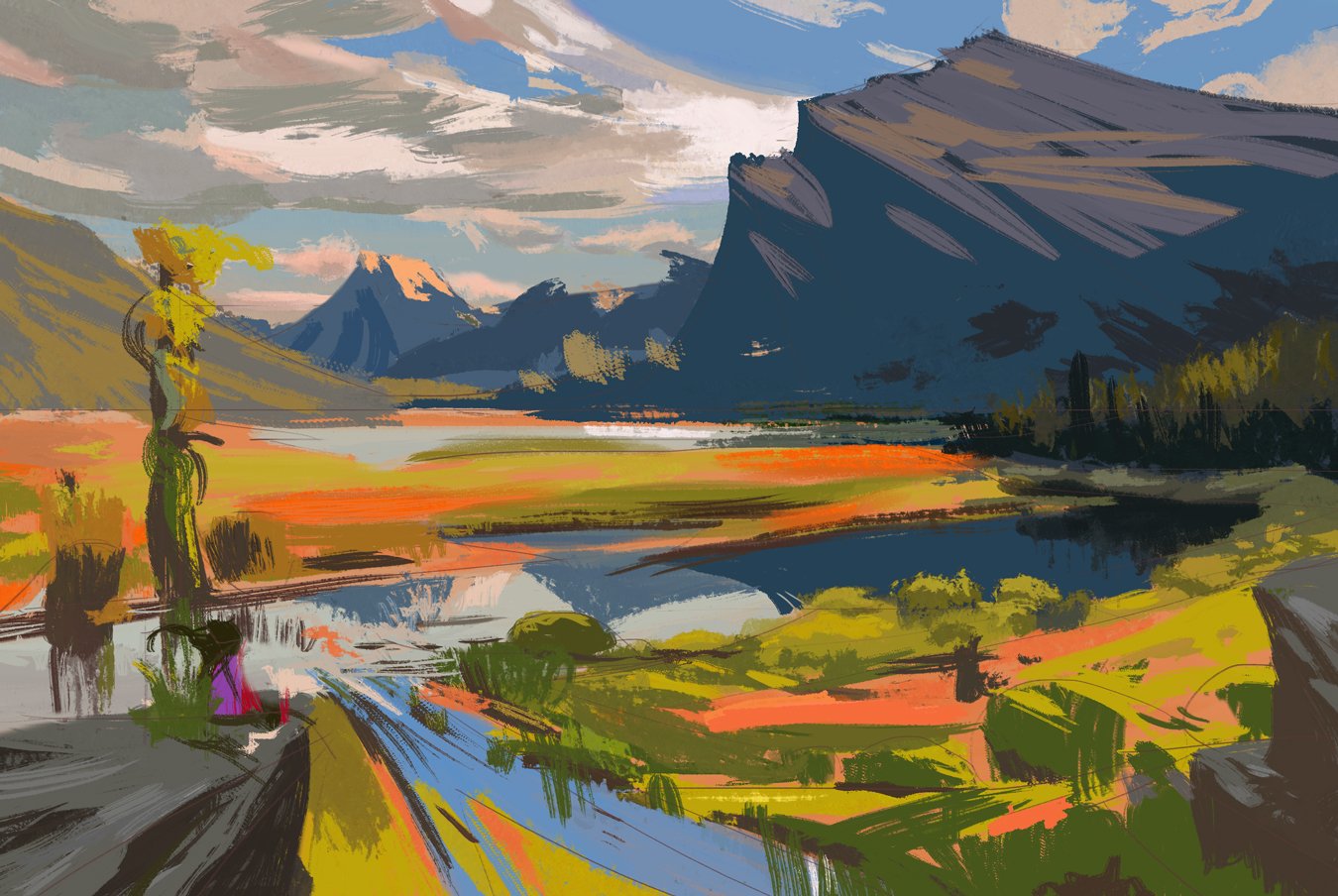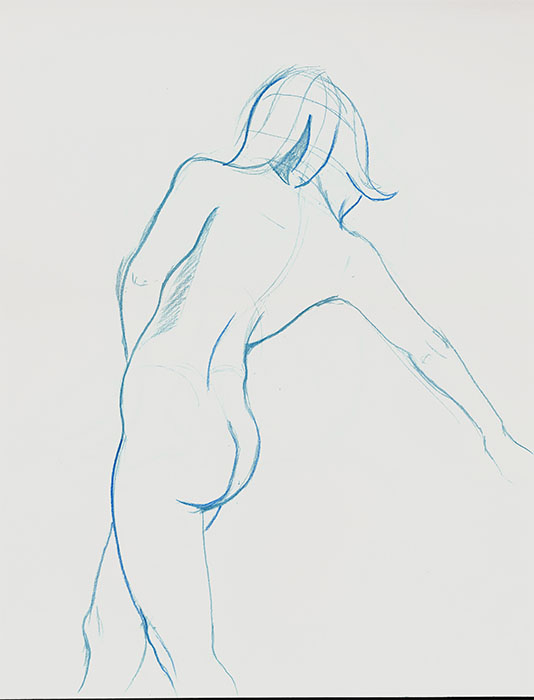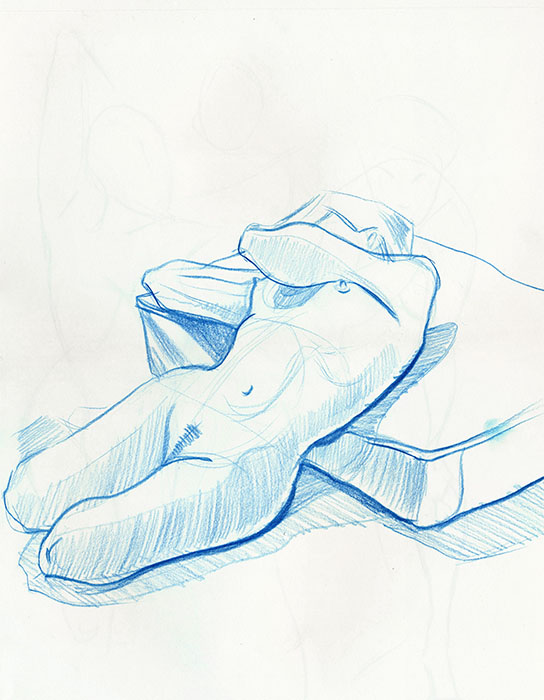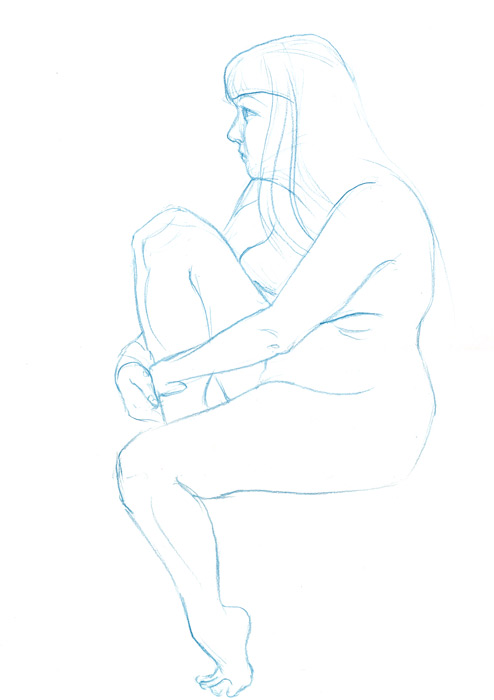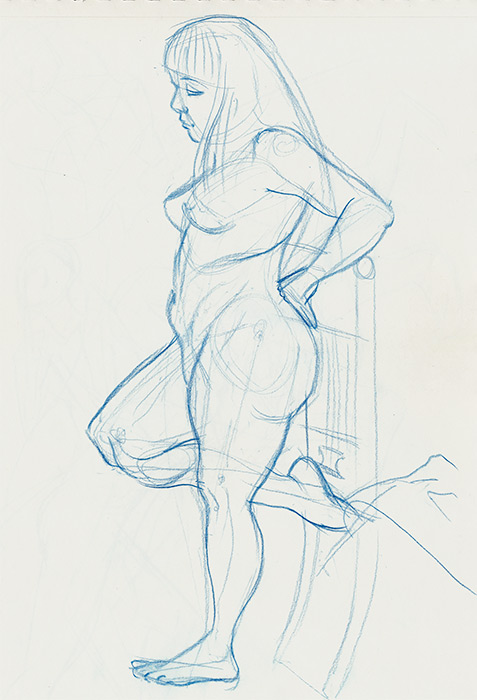Digital Painting with Bobby Chiu
I recently completed another course through Schoolism: Digital Painting with Bobby Chiu. I’ve had access to these courses for a while but between personal and client work, the challenge has always been motivating myself to actually go through them. In the past—when I did have time—I’d just skim the videos to try to apply it to my own work. However, I am encouraging myself to put in the extra effort to do the assignments and pay more attention to the lessons.
The lessons start off with foundational greyscale studies of objects and people, most of them timed. In one lesson, I drew the same girl 8 times in different orientations using the provided photo reference, then ultimately from memory. She definitely was burned into my brain by the end of it. Repetition is a great way to get to know your subject. In another of the timed lessons, a photo of Kim Jung Gi’s was referenced. The one on the left is Bobby’s where he prepared the under-drawing, curves and adjustment layers for us to paint in the highlight and darks; the one on the right is mine, drawn from scratch in about an hour.
Subsequent lessons focused on adding colour on top of the greyscale images Bobby created (you’ll probably recognize his iconic style in the fungi man and lizard creature). These were lots of fun to practice on.
I completed all of the lessons and, like in some of my posts, I will show only some of the results so I don’t give it all away.
Lessons 1 and 2: greyscale studies using a hard round brush with low flow and opacity
Lesson 3: Timed photo studies of Kim Jung Gi (the image on the right is mine done from scratch) I’m a lefty so placing the photo on the right was much easier for me.
Lesson 4: Applying colour to Bobby’s greyscale characters
Lesson 6: 20-minute greyscale studies from provided photos.
Inspired by the lessons I decided to take one of my character sketches and apply what I’d learned in this class. I may make a collection of these plant creatures.

